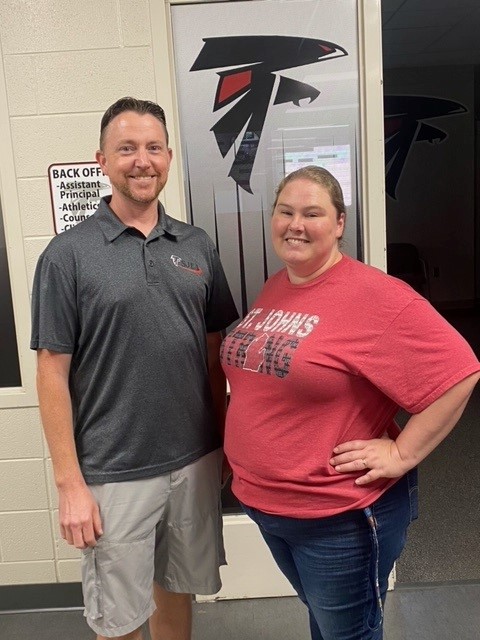St. Johns invests federal dollars to strengthen relationships
 Editor’s Note: This story is one in a series on various ways Michigan districts are spending federal Elementary and Secondary School Relief (ESSER) money – allocated by Congress and signed by President Joe Biden in the American Rescue Plan to address challenges in the wake of the COVID-19 pandemic.
Editor’s Note: This story is one in a series on various ways Michigan districts are spending federal Elementary and Secondary School Relief (ESSER) money – allocated by Congress and signed by President Joe Biden in the American Rescue Plan to address challenges in the wake of the COVID-19 pandemic.
On the heels of the COVID-19 pandemic, teachers have seen deficits in students’ social-emotional skills and corresponding behavioral challenges as a result. One way district leaders in St. Johns Public Schools are addressing the problem is with a new character-based curriculum.
The district used a portion of its federal COVID-relief funding last year on a program called Capturing Kids’ Hearts (CKH) which trains school employees and dedicates class time on building relationships, improving social-emotional well-being, and developing student-to-student connections.
Josh Heethuis, a middle school teacher who is president of the St. Johns Education Association, said the program is worth the time and dollars. “At a time when schools have the money to make this kind of investment, this is the time to do it,” Heethuis said.
MEA member Melissa Lonsberry, a middle school social studies teacher in St. Johns, said in the first year she saw improvements in her building that helped students make progress and succeed.
“What something like Capturing Kids’ Hearts does is bring consistency from building to building and classroom to classroom,” Lonsberry said. “This is a system of solid pieces that are just best practices and good ways to function in your classroom and as a building.”
Funding for the program came from the American Rescue Plan in 2021, which provided additional revenue for the Elementary and Secondary School Relief (ESSER) Fund to help schools address ongoing challenges arising from the public health crisis that began in 2020.
Michigan schools received more than $5.6 billion in ESSER I, II, and III grants, with staggered deadlines. While the expenditure period for ESSER I is already passed, the deadline for ESSER II and ESSER III is September 30, 2023 and 2024 respectively. If districts don’t use these dollars before the expenditure period ends, they forfeit the funds.
Heethuis and Lonsberry agreed the CKH training was the best professional development they have attended and it immediately spurred more staff camaraderie.
Some examples of what the program encourages staff to do includes greeting and welcoming students each day, sharing good things with each other daily, collaboratively building a social contract, sharing affirmations, and empowering students with choices in how they demonstrate and apply learning.
“If you really want to be a successful school, you have to build, develop, and then maintain these types of systems,” Heethuis said. “In education, relationships are at the core of everything you do.”
Lonsberry added it all comes down to when you put in the time and effort. “You are going to be investing the time in one place or another,” she said. “You’re going to invest it on the front end and come up with this system and plan that works, or you’re going to be correcting the behavior and dealing with it throughout.”
Capturing Kids’ Hearts has been in existence for over 30 years. According to their website, the program trains over 50,000 educators nationwide every year. In St. Johns, the district is committed to the program and plans to train new hires in CKH from this point on.
To see how much ESSER money your school district has left, visit the Michigan Department of Education COVID-19 Spend Dashboard.
If you have a story to share of how your district is spending federal COVID-relief funding, or if your local union needs help to have a voice in how spending decisions are being made (which is mandated in the spending bill), contact MEA’s ARP organizer, Heather Palo, at hpalo@mea.org.



